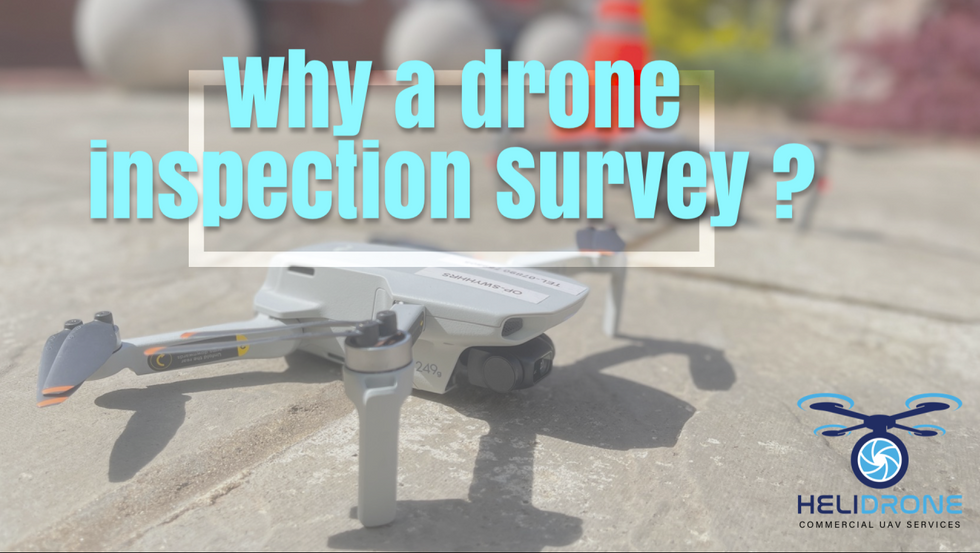.
It was a breakthrough when drones were first utilised to take aerial photographs of rooftops. Because of their limitations, cranes and cherry pickers couldn't access some of the most difficult-to-reach areas. Scaffolding and cranes and cherry pickers and may be expensive and require highly experienced personnel to operate them. They also may need additional foot path and road closures for their operation. This is at a higher cost and administration procedure.
Drones are increasingly being employed by building owners, homeowners, and commercial business for various reasons: including speeding up inspections and enhancing safety and data quality. Homeowners and real estate brokers often seek out the services of the a local drone inspection firm. A quick look at the rules and various elements of a complicated structural design is made possible with any UAV (Unmanned Aerial Vehicle) equipment. It doesn't matter if you can't afford to purchase a drone since you can still engage a professional operator to carry instructions and get useful information from the various types of data acquired from any drones cameras or various sensors they carry. Many different industries, such as oil and gas firms, insurance companies, and building maintenance companies employ drones for routine aerial inspection work.
Traditional roof inspections are not very precise, and they're unsafe (see ladders and lifting platforms) and costly, so its often best to employ a different approach. There are a few limitations to conventional roof examination and building inspections, such as the need for a larger workforce, the danger of roof collapse or damage, the length of time it takes, and the expense and as mentioned previously the aidminstaion associated with an operation.
Drones are more effective and efficient for potentially spotting leaks, damage, fractures, and other symptoms of structural collapse, they are safer, faster, and more precise. Drones are becoming more and more popular since they are less expensive, and their uses and capabilities are constantly evolving. As a result, many significant businesses are turning to this technology to help them enhance their processes. For construction supervisors, surveyors and building management to be able to share information and work together.
For many reasons, a building inspection and roof survey are important procedures and must be carried out at regular intervals. Many real estate agents, property buyers, and insurance companies rely on information about roofs and walls and all elevations to make informed decisions, certainly for maintenance reasons. In these scenarios, any UAV should be very useful in identifying and correcting faults that might lead to accidents and damage.
Here are a few more purposes drone equipment can be used for:
If a person must scale the roof for repairs, maintenance, or upgrades, such as installing solar panels and other equipment, we may utilise drones to do safety checks and ensure the rooftop is acceptable for the worker/installer. When installing a solar panel, many energy providers require a feasibility study to establish what they require, how much is the installation cost, and the best way to attach the panel. As a result, a digital model may be created in only a few hours using a drone rather than the weeks it would take using conventional techniques. Using drones to inspect solar panel problems is also an option. With thermal imaging sensors mounted under the equipment methods may be used to find mechanical and other defects, overheating/inefficient panels and other concerns, even excessive dust and debris build up.
Insurance companies often request details on a building's roof and walls for assessing when insuring. Accurate property inspections in this scenario allow for proper analysis and determination of the damages covered by insurance companies while making repairs. Drones may speed up assessing damage to a structure and obtaining more accurate data here the objective is to give a fairness to both parties with any premiums.
A drone is a must-have tool if your roof has to be upgraded. For the roofing contractor to know what to anticipate when they begin working on a home's roof, the building owner must provide information regarding its current state. Drones equipped with high-resolution cameras (taking video and stills RGB data) enable their operators to locate areas that have heat signatures indicative of poor or inadequate insulation.
A primary advantage is their ability to decrease potential hazards to people's (operatives and workforce) safety. Falls are the most common cause of roof inspection related injuries. Because there is no need for a person to ascend a home or commercial building to roof height, the drone lowers the chance of injury. Workers are also protected from hazards such as exposed power-lines and protective cables, which are most often seen on the rooftops of construction sites.
We hope this document has provided some idea of how UAV’s maybe used for commercial purposes. Here, we have touched on a few of the uses these pieces of equipment can provide, if you contact any drone inspection survey company
They will be able to talk over your project and give you the correct information for gathering data for any reports




















 sunrise
StableDiffusion
sunrise
StableDiffusion
 bonfire friends
StableDiffusion
bonfire friends
StableDiffusion
 sadness
StableDiffusion
sadness
StableDiffusion

 purple skies
StableDiffusion
purple skies
StableDiffusion

 true love
StableDiffusion
true love
StableDiffusion
 My Cheerleader
StableDiffusion
My Cheerleader
StableDiffusion
 womans transformation to happiness and love
StableDiffusion
womans transformation to happiness and love
StableDiffusion
 future life together of adventures
StableDiffusion
future life together of adventures
StableDiffusion





















